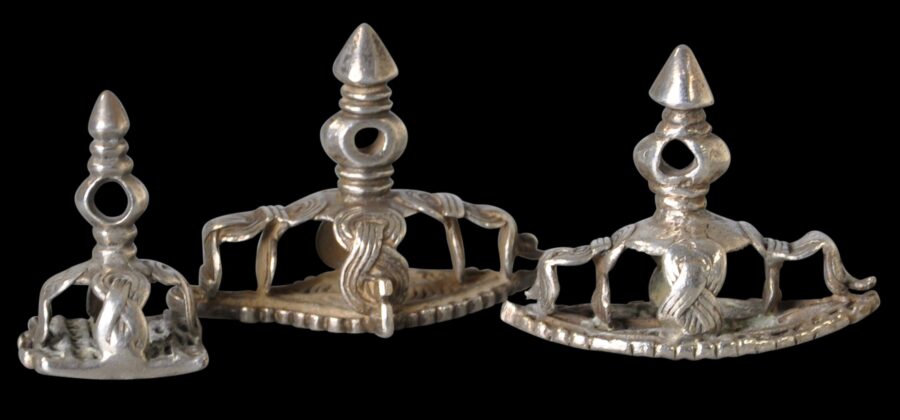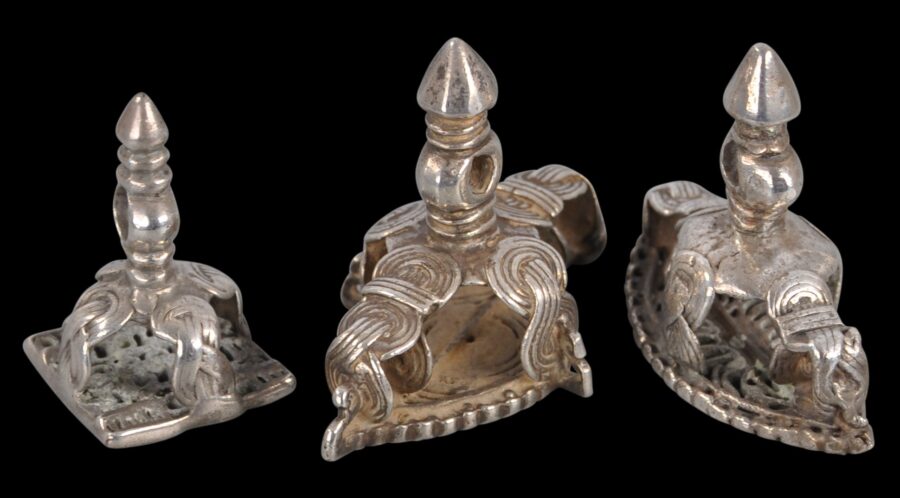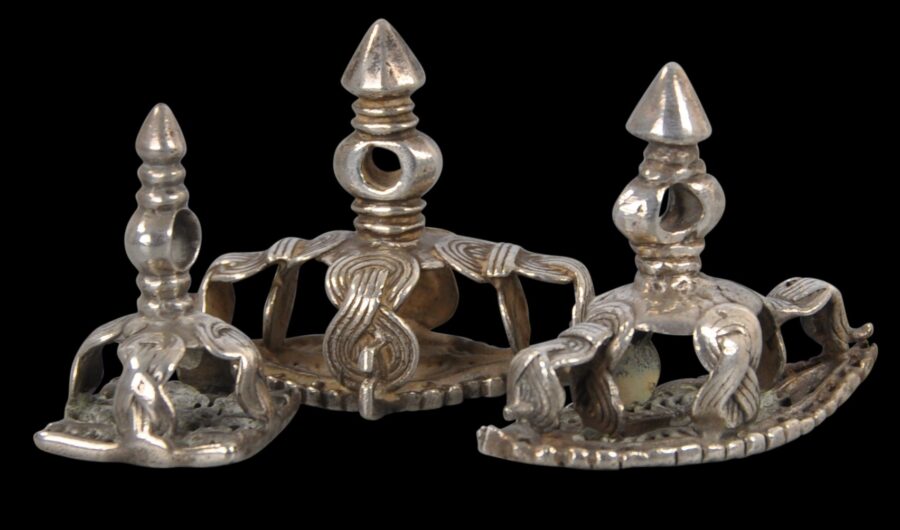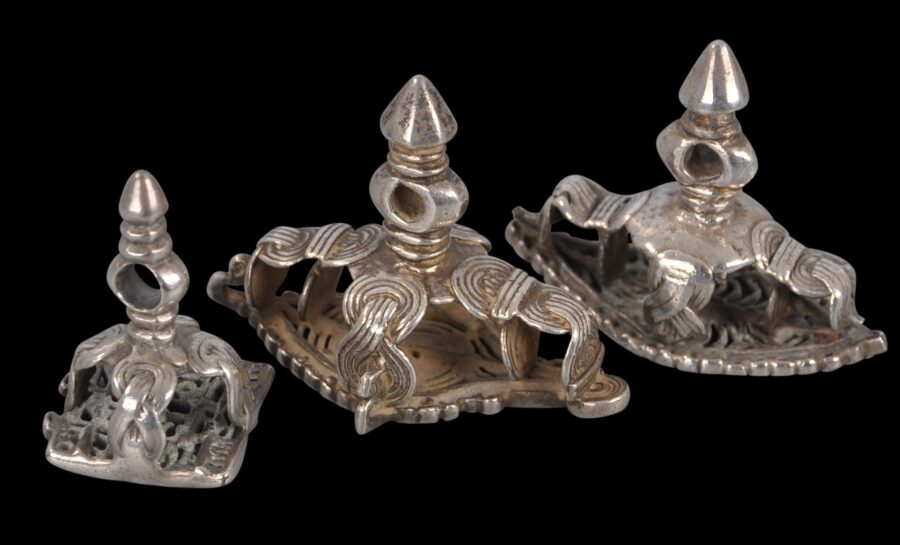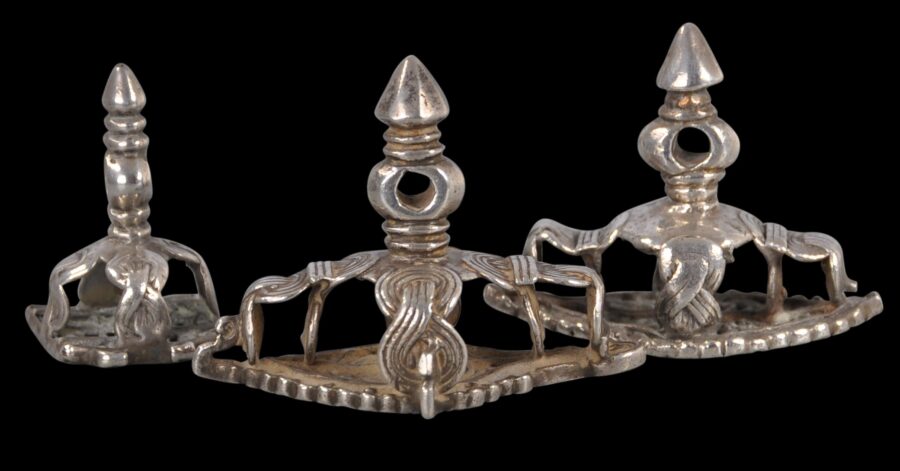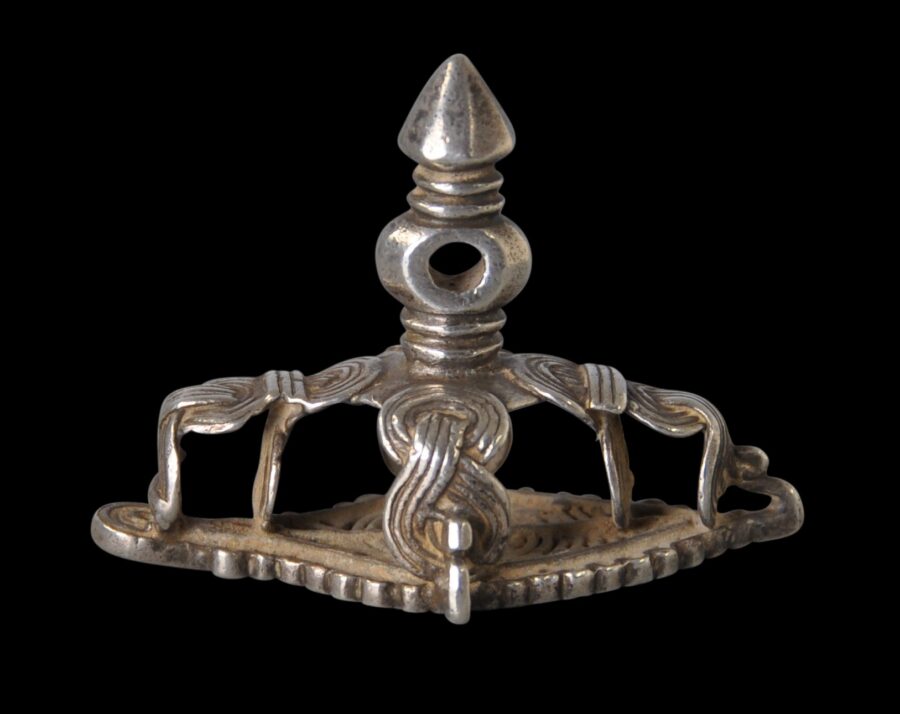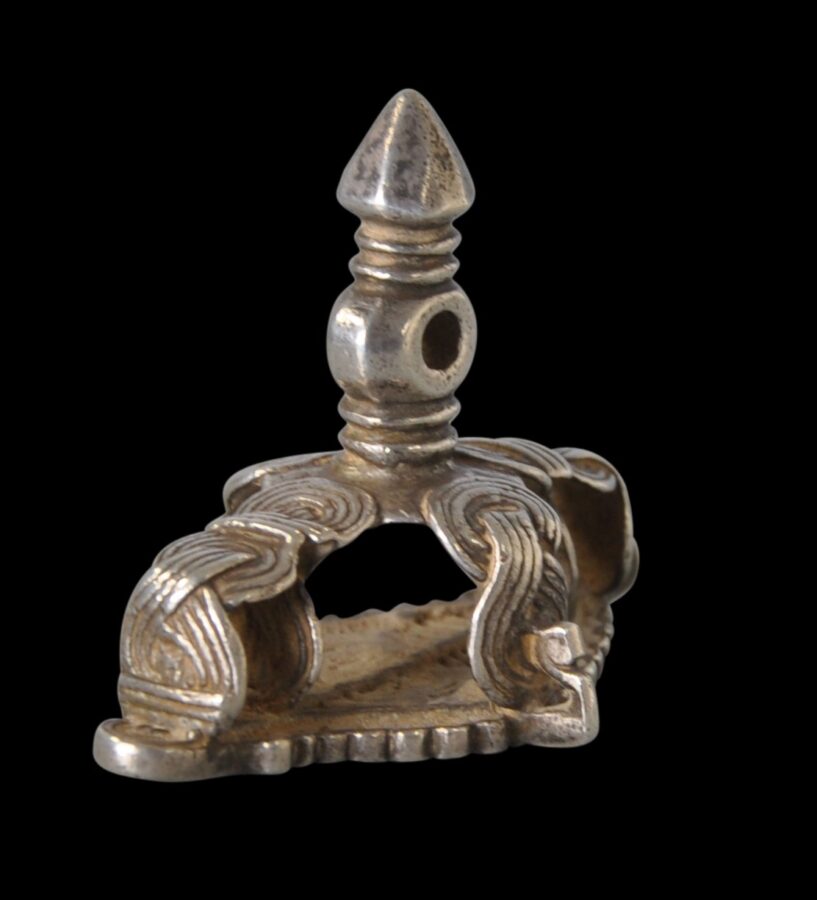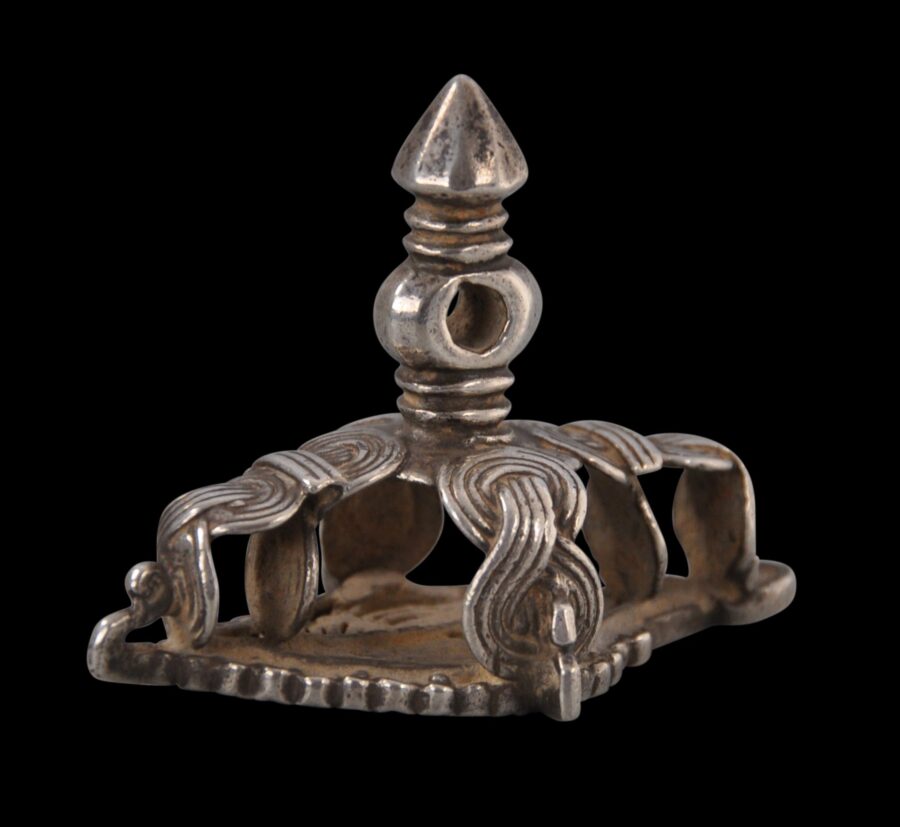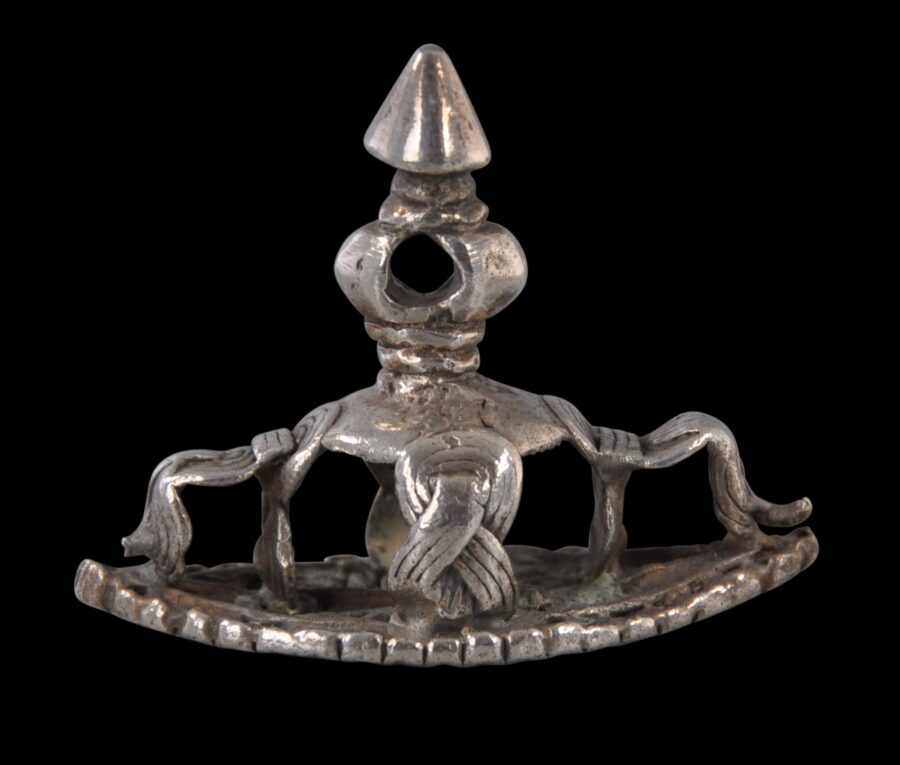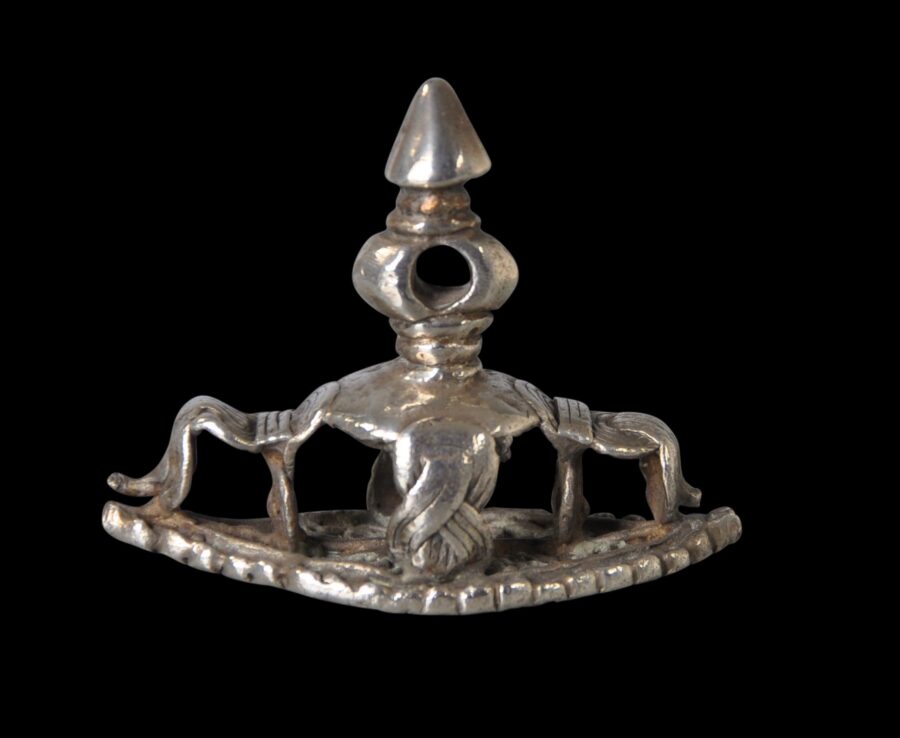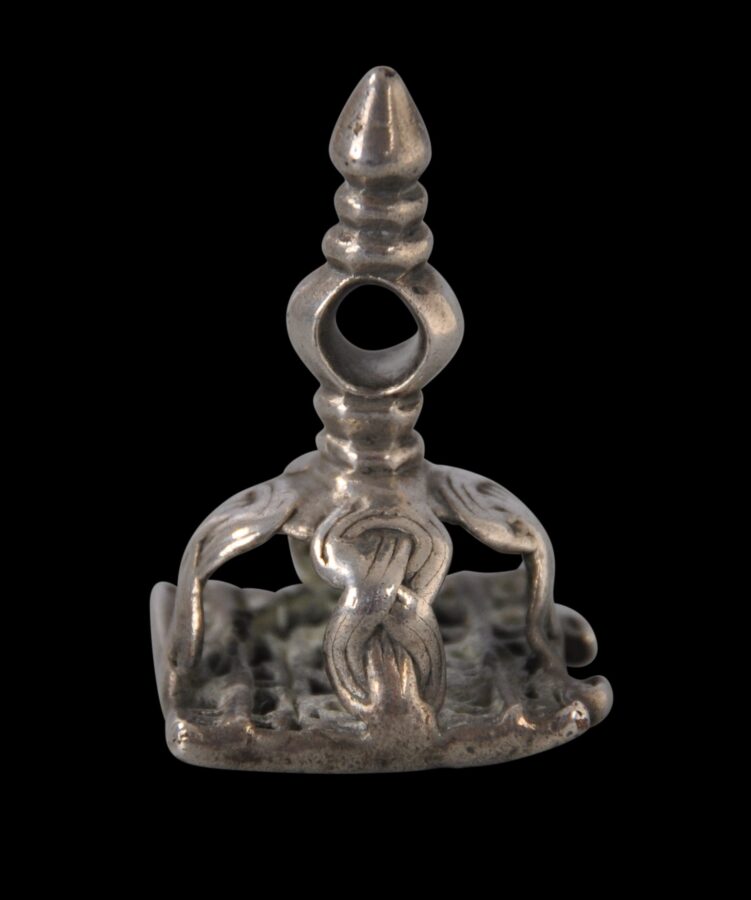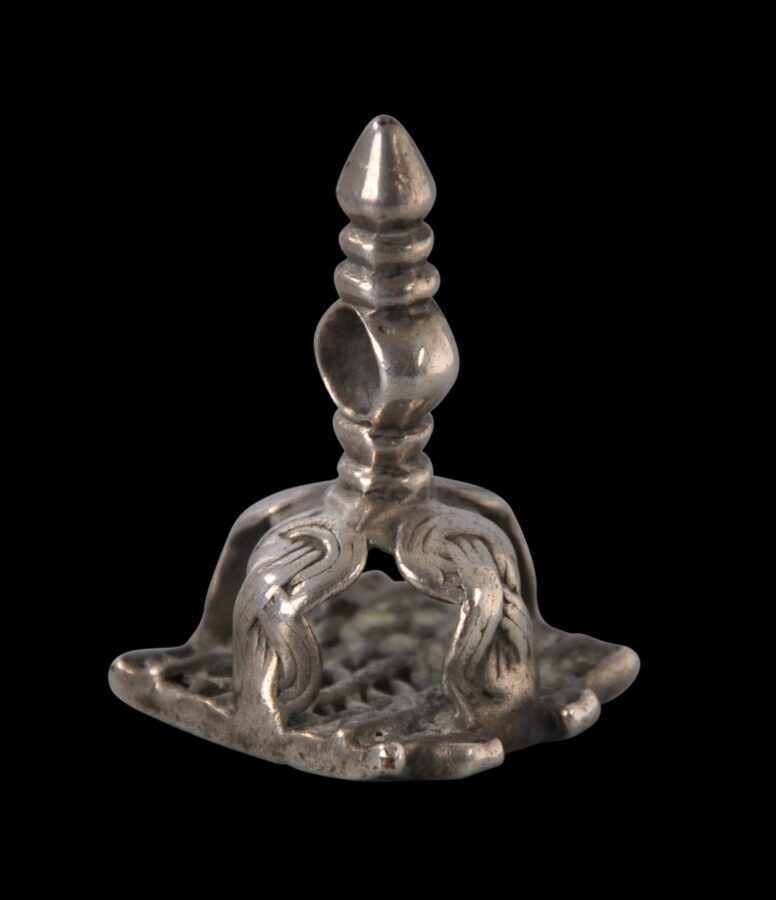Enquiry about object: 7456
Three Rare Indian Hindu Silver Temple Body Stamps (Chhapa)
Orissa or Bengal, India 18th-19th century
length: 3.3 to 6cm, height: 4 to 4.5cm, combined weight: 94g
Provenance
private collection, London; acquired from Henry Brownrigg, London.
These three devotional stamps (chhapa), from Northeast India, are particularly rare on account of being made from silver rather than bronze. Indeed, to date we have seen many bronze examples – but these are the only silver examples we have encountered. Additionally, the silver used is essentially pure (so of a higher grade than sterling).
The square stamp has as its face invocations in Bengali script (in reverse). One of the other two stamps comprises a conch or shanka motif. The other has an insect-type motif.
The reverse of each stamp comprises a supportive, bracing structure, cast as a plaited silver handle which terminates with a pierced finial to allow suspension.
It is customary for many Vaishnavite, Shaivite and other sect adherents to mark the body with such stamps. The marks on the body provide a visual display of the adherent’s devotion and also to transfer the beneficence of the deity to the wearer. According to Untracht (1997, p.25) the stamps are applied after the devotee has undergone a purifying bath. A paste of white sandalwood and water is then prepared in the case of Vaishnavites or in the case of Shaivites a paste of red sanders wood. (The stamps variously retain paste remnants.) The paste is then applied using the stamp to proscribed parts of the body such as the forehead, cheeks, shoulders, forearms and stomach. The main Vaishnavite stamps are those associated with Vishnu – the conch and the lotus.
Similar bronze stamps are illustrated in Utracht (1997, p. 26.)
The use of silver here is very rare but is consistent with a select few other ritual-related items also made of pure silver most probably for aristocratic devotees. In Hinduism, silver was seen as a ‘pure’ metal and so appropriate for use in the fabrication of religious items.
Each stamp here has obvious age and excellent patina. An 18th and 19th century dating is based on the wear and rarity.
Overall, these three examples are of fine, museum quality.
References
Skelton, R. & M. Francis (eds.), Arts of Bengal: The Heritage of Bangladesh and Eastern India, Trustees of the Whitechapel Gallery, 1979.
Untracht, O., Traditional Jewelry of India, Thames & Hudson, 1997.


